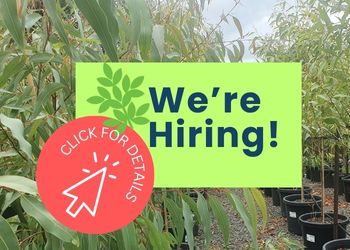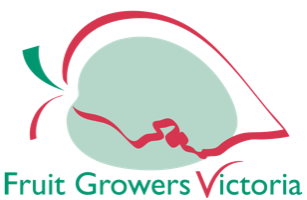
Melbourne’s landscape is changing, no more so than in our selection and varieties of trees. The Victorian era saw a boom in European trees, but in recent decades, their popularity has declined, and we have switched to more native species.
Is that the right answer?
We are going to highlight some of the popular species around Melbourne, thanks to European influences, but also offer our opinion on how Melbourne should plan its trees for a growing population, changing climate and efficiency.
Let’s start at the beginning…
Historically Popular Trees in Melbourne
Elm Trees (Ulmus)
These have been a consistently popular tree across Melbourne since its early days! After projects into genetics and different growth varieties out of England, a lot were planted around Victoria and they’ve proven to be effective in Melbourne and have coped well in our variable climate–the heat and dry, the wet and cold.

Chldren climbing on an Elm Tree
London Plane Trees (Maple-leaved Plane) (Plantinus x acerifolia)
The London Plane tree was another early settler in Melbourne. It grows well in swamps and in any ground with little oxygen when compacted, so it adapted well to Melbourne’s climate.
They provided effective shade coverage, growing big and broad. Their branches are so strong that when pruning, an arborist can walk along some as little as an inch thick! This made them suitable for placements around schools, streets and cities.
More recently, they have fallen out of favour because of their link to allergies, particularly asthma, from the indumentum on the back of the leaf. The indumentum covers trichomes (fine "hairs") on a plant. It's quite dangerous, and there's talk about them now also being carcinogenic.
You will still see many of these trees across Melbourne and Victoria.

A London Plane Tree growing in Melbourne
Growing European Trees in Melbourne
Many European big trees that evolved in Europe drop their leaves to cope with our summer. Look around at Christmas time in Melbourne and there are heaps of flying leaves from varieties like Plane trees. If they experience a hot day, they drop their leaves, and that’s not necessarily what we want from a climate perspective.
We need trees that hold their leaves over the summer, creating a dense canopy. Not only do they provide shady relief, but they also pump water to their leaves, which transpire water. This makes the air around the tree a few degrees cooler through evapotranspiration.
Many councils have opted to plant native trees, and while this has its benefits, it's not a perfect solution. Native trees are not big water pumpers and, therefore, are less suitable for cooling the ground beneath them. They shade the space but don’t cool it through evapotranspiration.
If you stand under an English Oak or a Golden Oak in the middle of summer, it's four, five, or six degrees cooler.

Native trees only cool with their shade. Their foliage is often lighter and finer. They have evolved in a climate where water becomes scarce, so they have become more drought-tolerant to survive. As a result, they have stopped pumping water to the same extent that European trees do and are not great organic air conditioners, like European trees.

Dense trees lining a Victorian Street
Native trees are trending, and we wanted to analyse why that might be.
“I think it's a fashion thing. I think it’s about indigenous awareness and climate change. People make assumptions about what's good for a climate and what isn't and what's good for Australia and what’s not.” Hamish Mitchell, Owner & MD of Specialty Trees
Whilst we understand many of us are trying to do our best for Victoria and the planet, we shouldn’t abandon tree varieties in favour of natives because all trees can play a part.
“There are plenty of great natives but I think we should plant probably as many ornamental trees as we do native.”
Diversity is key–the ideal solution is a mix. In the City of Melbourne at the moment, a large percentage – perhaps more than 50% are natives of the Myrtaceae family:
- Eucalyptus,
- Corymbia,
- Callistemon,
- Melaleuca etc,
A few years back, these were at risk of Myrtle Rust disease. With too much of one sort of tree, in this instance Myrtaceae, there’s an elevated risk of losing a significant percentage of trees to a genetic disease. These are established trees that have taken a generation to grow.
The answer is to plant a diversity of species.
Between evergreen and deciduous trees, between native and exotic, there is an opportunity for an intelligent mix.
In Melbourne, we are lucky to have sunshine in the winter. If you’ve got evergreen native trees, you don't get sunshine in the winter, you get cold, wet and damp. We want the best of both worlds: sun in winter and shade in summer.
We have spent decades growing, nurturing and researching trees in Melbourne. If you would like help on a project, or want to discuss trees for your home, business, council, or other, please get in touch with our team, who are only too happy to talk all things trees.
Receive all the latest news, product information, collections, projects, tips and special offers straight to your inbox each month or so.
Receive all the latest news, product information, collections, projects, tips and special offers straight to your inbox each month or so.
Treefinder can help you identify the perfect tree for your next project!
With over 400 tree varieties for review, the Treefinder app enables you to conveniently browse and compile a list of trees suitable for a number of common landscaping uses - from attracting birds to creating a formal screen or hedge. By selecting desired size, foliage, and a few categories, Treefinder opens up a world of possibilities.
Once you've found the perfect tree you can click through to our website for more information, availability and a quote.

We are specialists in the environmentally sustainable production of premium quality advanced landscaping trees and screens.
For more than 48 years Speciality Trees has been a leader in the production and supply of advanced environmentally sustainable, containerised landscape trees for local government, the landscaping industry and retailers.
Learn more








